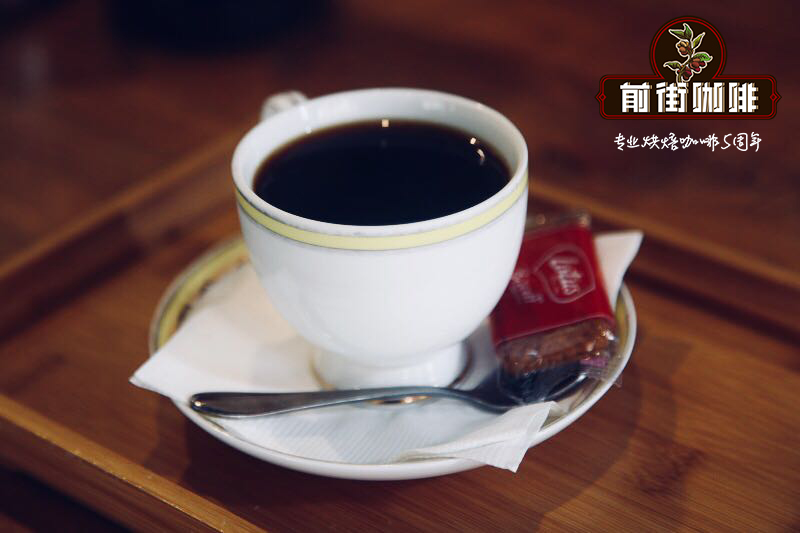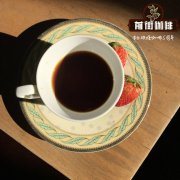The characteristics between semi-washing and Sumatra wet planing in the treatment of coffee

Professional coffee knowledge exchange more coffee bean information please follow the coffee workshop (Wechat official account cafe_style)
Semi-washing: move the red fruit into the pulp screening machine to remove the pulp, then move the red fruit into the tank for fermentation, and move the pectin-bonded coffee beans to the outdoor bean drying farm to dry. When the water content reaches 10.5% Mel 12%, the coffee fruit is stored in a special container to ripen. And then grind off the pectin package.
[interpretation of wet planing]
Every year from March to May and September to December is the Sumatra harvest season for Manning, and now most coffee farmers only harvest all-red coffee cherries.
After collecting the coffee cherries in the morning, in the afternoon, the coffee cherries will be peeled and pulped into wet beans with shells, which is what we call parchment coffee, and then put the shells into the sink to remove the floating defective beans.
Sumatra has a superior natural environment, and most of the water used will be mountain spring water.
The next step is to take out the dense beans and put them into a barrel for dry body fermentation, so that the pectose can be fully fermented to increase the flavor, usually between 12 and 36 hours, depending on the specific situation.
After exposure to the sun for 1-2 days, when the moisture is dried to 35-40%, the coffee beans are collected in woven bags, usually 40 kg and 80 kg each, and sent to the coffee processing plant for shelling.
The shelling process is to grind off the bean shell with a shell planer and then dry it until the moisture content reaches about 12% to 15%. The coffee beans are then sent for machine selection to remove a variety of impurities and then sorted by particle size.
The coffee after machine selection will be sent to the hand-selected warehouse for hand-selection, and the workers will pick out the defective beans one by one. It will be packed in gunny bags only after two or three hand selections.
Of course, accidents can happen.
In the shell planing process, the coffee bean temperature will rise to 30-60 degrees, and completely destroy the parchment, which is likely to trigger the bean sprouting.
Wet planing will also occur because the peel is removed in the production process, and the beans come into direct contact with the air, so defective beans such as mildew beans are much higher than water washing and sun drying.
This is the unique way of handling Sumatran Mantenin flavor.
END
Important Notice :
前街咖啡 FrontStreet Coffee has moved to new addredd:
FrontStreet Coffee Address: 315,Donghua East Road,GuangZhou
Tel:020 38364473
- Prev

Which one do you prefer between the two ways of running with ice hands? The operation method of Japanese hand flushing get
Professional coffee knowledge exchange more coffee bean information Please follow the coffee workshop (Wechat official account cafe_style) usually when we do ice hand flushing, we usually add ice in the sharing pot, but the editor saw a very interesting practice some time ago, that is, add ice in the filter cup to pour back the extracted high concentration coffee liquid. The editor is a little curious about these two ways.
- Next

The characteristics between semi-washing and Sumatra wet planing in the treatment of coffee
Professional coffee knowledge exchange more coffee bean information please pay attention to the coffee workshop (Wechat official account cafe_style) semi-washing: transfer the red fruit into the pulp screening machine to remove the pulp, then move the red fruit into the sink for fermentation, move the pectin coffee beans to the outdoor bean drying farm to dry. When the water content reaches 10.5% Mel 12%, the coffee fruit is stored in a special container to ripen. Regrinding
Related
- What is the meaning of lactic acid fermentation with coffee bean treatment?
- How to judge the state of foam by sound?
- How does the latte pull out the unicorn pattern? Come to get for a little trick to improve the flower pull!
- Will flower pulling affect the taste of the latte?
- Do you know the history of coffee?
- The difference between honey treatment and sun washing what is raisin honey treatment?
- What kind of milk can a novice use to make coffee foam to keep the foam longer? The correct method and skills of milking tutorial sharing
- Why do washed coffee beans taste sour? Flavor characteristics of washed Coffee
- Introduction to the skill of how to practice the size and height of water injection around the circle of hand-brewed coffee
- How do beginners practice coffee flower drawing from scratch?

